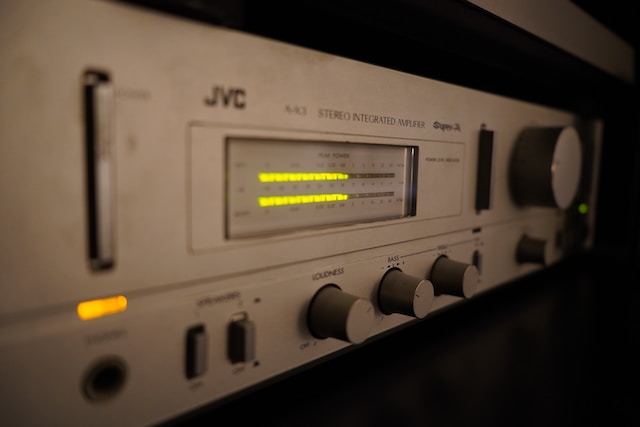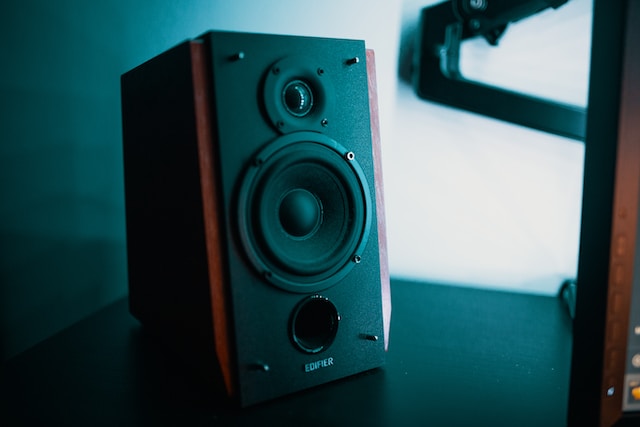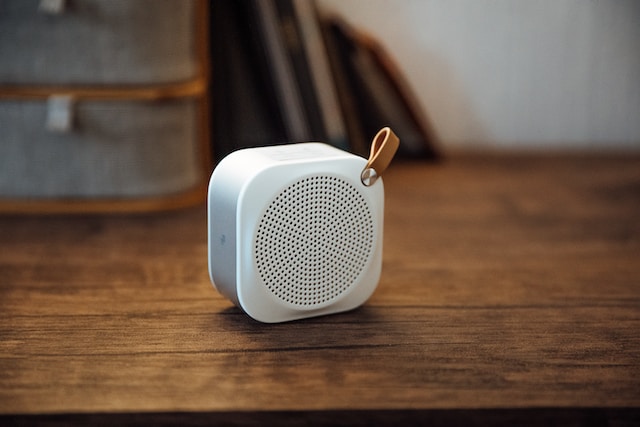Amplifiers increase the strength of audio signals, while speakers convert electrical signals into sound. Amplifiers power speakers to produce audible sound.
TL;DR Amplifiers Vs. Speakers
Amplifiers and speakers are essential components of an audio system. Amplifiers increase the strength of audio signals and power the speakers, while speakers convert electrical signals into sound waves. Amplifiers ensure the signals are amplified accurately, while speakers reproduce the sound with their unique characteristics. Choosing the right pairing between amplifiers and speakers is crucial for optimal sound quality. Amplifiers cannot be used as standalone speakers, and both components contribute to the overall listening experience.
What are amplifiers?

An amplifier takes a weak electrical signal and amplifies it to a level that can power speakers. It acts as the intermediary between your audio source (such as a CD player or smartphone) and your speakers.
But how does an amplifier accomplish this task? Well, inside every amplifier lies a circuitry that receives the low-voltage signals from your audio source and then increases their amplitude using various electronic components. This amplified signal is then sent to your speakers, allowing you to enjoy music at higher volumes without distortion or loss of quality.
In addition to powering speakers, some amplifiers also offer additional functionalities like tone control settings or built-in equalizers. These features allow you to fine-tune your sound according to personal preferences for bass response and treble clarity.
Amplifiers play a crucial role in shaping our listening experience by providing sufficient power for our speakers while maintaining fidelity and clarity in reproduced sound.
What are speakers?

Speakers are an essential part of any audio system. Speakers convert electrical signals into sound waves that we can hear. They come in various shapes and sizes, from small portable Bluetooth speakers to large floor-standing models.
Speakers consist of different components that work together to produce sound. The main components include a diaphragm or cone, voice coil, magnet, and enclosure. When an electrical signal is sent to the speaker’s voice coil, it interacts with the magnetic field produced by the magnet. This causes the diaphragm or cone to vibrate and create sound waves.
The quality of a speaker depends on several factors such as frequency response, sensitivity, impedance, and power handling capacity. Higher-end speakers often feature multiple drivers for better performance across different frequency ranges.
Amplifiers Vs. Speakers – Key differences
| Amplifiers | Speakers | |
|---|---|---|
| Function | Increase the strength of audio signals | Convert electrical signals into sound waves |
| Purpose | Power the speakers to produce sound | Reproduce sound with accuracy and clarity |
| Operation | Amplify weak electrical signals | Convert electrical signals to sound waves |
| Components | Electronic circuitry, power supply, controls | Diaphragm or cone, voice coil, magnet, enclosure |
| Role in the system | Provide power and control over audio signals | Produce sound with specific characteristics |
| Power Output | Measured in watts | Not applicable |
| Control and Features | Volume, tone controls, equalizers (some) | Not applicable |
| Compatibility | Needs to be matched to speaker requirements | Needs to be matched to amplifier requirements |
| Importance | Crucial for delivering sufficient power | Crucial for accurate sound reproduction |
| Standalone Function | Can't produce sound without connected speakers | Produces sound when receiving electrical signals |
| Examples | Tube amplifiers, solid-state amplifiers, digital amplifiers | Bookshelf speakers, floor-standing speakers, subwoofers |
Types of Amplifiers and Speakers
Amplifiers
- Stereo Amplifier: This type of amplifier is designed to power two speakers and typically has two channels, one for the left speaker and one for the right speaker.
- Multichannel Amplifier: These amplifiers are used in surround sound systems and home theaters. They have multiple channels to power multiple speakers, such as 5.1 or 7.1 systems.
- Integrated Amplifier: It combines a preamplifier and power amplifier in a single unit, simplifying the setup and providing amplification for speakers.
- Tube Amplifier: Tube amplifiers use vacuum tubes to amplify the audio signal. They are known for their warm and rich sound characteristics but tend to be bulkier and require more maintenance.
- Solid-State Amplifier: Solid-state amplifiers use transistors or integrated circuits to amplify the audio signal. They are generally more compact, efficient, and offer high power output.
Speakers
- Floor standing Speakers: These are large, freestanding speakers designed to sit on the floor. They typically have multiple drivers, including woofers, midrange drivers, and tweeters, providing a wide frequency response and powerful sound reproduction.
- Bookshelf Speakers: Compact and versatile, bookshelf speakers are designed to be placed on bookshelves, stands, or mounted on walls. They offer good sound quality and are suitable for smaller rooms or as part of a surround sound system.
- In-Wall and In-Ceiling Speakers: These speakers are installed directly into walls or ceilings, providing a discreet audio solution. They are commonly used in home theaters or multi-room audio systems.
- Subwoofers: Subwoofers specialize in reproducing low-frequency sounds, adding depth and impact to music and movies. They are dedicated to handling bass frequencies and are often paired with other speakers in a system.
- Soundbars: Soundbars are compact speaker systems that are typically placed under or above a television. They provide improved audio quality compared to built-in TV speakers and are popular for home entertainment setups.
- Outdoor Speakers: These speakers are designed to withstand outdoor conditions and provide audio in open-air environments, such as patios, gardens, or pool areas.
Which Is More Important, Speakers Or Amplifiers?
In general, amplifiers are more important than speakers for the overall sound quality of a system. This is because a good amplifier can make even mediocre speakers sound good, while a bad amplifier can ruin even the best speakers.
However, speakers are still important, as they are the final step in the audio reproduction process. If you have poor-quality speakers, even a good amplifier will not be able to make them sound good.
So, which is more important, speakers or amplifiers? It really depends on your individual needs and preferences. If you are looking for the best possible sound quality, then you should invest in a good amplifier. However, if you are on a budget, then you can get away with using mediocre speakers as long as you have a good amplifier.
Here are some factors to consider when choosing between speakers and amplifiers:
- Your budget: Speakers and amplifiers can range in price from a few hundred dollars to several thousand dollars. If you are on a tight budget, you may want to consider investing in a good amplifier and using less expensive speakers.
Your listening preferences. If you are a critical listener who enjoys high-quality sound, then you will want to invest in both good speakers and amplifiers. However, if you are not as concerned about sound quality, then you may be able to get away with using less expensive speakers. - Your listening environment: The size and shape of your listening environment will also affect your speaker and amplifier choices. If you have a small room, then you will need speakers that are designed for close-range listening. If you have a large room, then you will need speakers that are designed for more distance listening.
The best way to decide which is more important, speakers or amplifiers, is to experiment and see what sounds best to you. Visit a local audio store and listen to different speakers and amplifiers to see which ones you prefer.
How to pair amplifiers and speakers?
- Consider speaker specifications: Review the specifications of your speakers, including their power handling capacity (in watts), impedance (in ohms), and sensitivity (in decibels). These specifications will guide you in finding a compatible amplifier.
- Match power ratings: Ensure that the amplifier’s power output (wattage) matches or is within the recommended range of the speakers’ power handling capacity. Mismatched power can result in either underpowered or overdriven speakers, affecting sound quality and potentially damaging the equipment.
- Impedance matching: Match the impedance rating of the speakers with the amplifier’s output impedance. Impedance mismatch can cause inefficiencies and potentially damage the amplifier or speakers. Typically, the amplifier’s output impedance should be lower than the speakers’ nominal impedance.
- Consider sensitivity levels: Speakers have sensitivity ratings that indicate how efficiently they convert electrical power into sound. Aim for a balanced match between the sensitivity of the speakers and the power output of the amplifier. This helps ensure optimal volume levels and avoids underpowered or overdriven sounds.
- Room size and listening preferences: Consider the size of your listening space and your personal preferences. Larger rooms may benefit from speakers with higher power handling and larger drivers, while smaller rooms may require smaller speakers. Your listening preferences, such as the desired tonal balance or music genres, can also influence your choice of speakers and amplifier pairing.
- Listen and evaluate: Once you have connected the amplifier and speakers, listen to the sound output and evaluate the performance. Pay attention to the clarity, dynamics, tonal balance, and overall sound quality. Make adjustments as necessary, such as fine-tuning the amplifier settings or considering speaker placement and room acoustics.
- Seek expert advice: If you are uncertain or want professional guidance, consult with audio specialists or professionals who can provide recommendations based on your specific needs, budget, and equipment.
Remember that pairing amplifiers and speakers is not just about matching specifications but also about achieving a synergy that suits your preferences and listening environment. Take your time to research and audition different combinations to find the best match for your audio system.
Can an amplifier be used as a speaker?
No, an amplifier cannot be used as a speaker. Amplifiers and speakers serve different functions within an audio system.
An amplifier is designed to take a low-level audio signal and increase its power or amplitude. It provides the necessary electrical power to drive a speaker by boosting the signal to a level suitable for driving the speaker’s voice coil. The amplifier’s role is to strengthen the signal, not produce sound directly.
To achieve proper audio reproduction, an amplifier and a speaker work together in an audio system. The amplifier amplifies the audio signal, and the speaker converts the amplified signal into audible sound.
How amplifiers and speakers affect listening experience?
Amplifiers:
- Power and Clarity: A high-quality amplifier can provide sufficient power to drive speakers effectively, ensuring accurate reproduction of audio signals without distortion or clipping. It helps maintain clarity, dynamics, and detail in the sound.
- Signal Fidelity: A good amplifier preserves the integrity of the audio signal, faithfully reproducing the original recording. It minimizes added noise, distortion, and coloration, allowing for a more accurate representation of the music or audio content.
- Control and Accuracy: Amplifiers with good control over speaker drivers can deliver tight and accurate bass, precise imaging, and better overall sonic reproduction. They can provide better transient response and handle dynamic peaks with finesse.
Speakers:
- Frequency Response: Speakers have different frequency response characteristics that determine their ability to reproduce different ranges of frequencies accurately. Well-designed speakers with a wide and balanced frequency response can offer a more natural and immersive listening experience across various types of audio content.
- Imaging and Soundstage: Speakers with proper dispersion and imaging capabilities can create a sense of depth, width, and placement of instruments or sound sources in the audio stage. This enhances the realism and spatial qualities of the listening experience.
- Dynamics and Impact: High-quality speakers with good power handling and efficient driver design can reproduce dynamic passages with impact and authority. They can accurately convey the energy and dynamics of the music, making it more engaging and immersive.
- Tonality and Timbre: Speakers contribute to the tonal balance and timbre of the sound. Well-designed speakers can accurately reproduce the tonal characteristics of different instruments and vocals, ensuring a natural and pleasing sonic presentation.
Image Credits
Featured Image By – Photo by Nicolas J Leclercq on Unsplash
Image 1 By – Photo by alvaro ortiz on Unsplash
Image 2 By – Photo by Josh Sorenson on Unsplash








